AZINPHOS-ETHYL
- CAS NO.:2642-71-9
- Empirical Formula: C12H16N3O3PS2
- Molecular Weight: 345.38
- MDL number: MFCD00055539
- EINECS: 220-147-6
- SAFETY DATA SHEET (SDS)
- Update Date: 2024-12-18 14:08:52
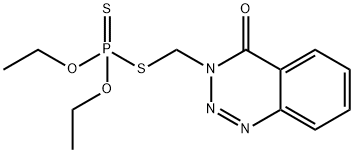
What is AZINPHOS-ETHYL?
Description
Azinphos-ethyl is a colorless crystalline substance; Freezing/Melting point= 53℃. Molecular weight=345.4. Boiling point= 111℃. Hazard Identification (basedon NFPA-704 M Rating System): Health 3, Flammability 0,Reactivity 0. Slightly soluble in water.
Chemical properties
Azinphos-ethyl forms colorless, clear crystals. It is insoluble in water, but soluble in most
organic solvents. As an acaricide, azinphos-ethyl is used for the control of pests, such as,
spider mites, aphids, caterpillars, potato bug, beetles, bollweevils, whitefl ies, bollworms,
thrips, and other biting and sucking insects. Human exposures to azinphos-ethyl occur
through absorption from the gastrointestinal tract, through the intact skin, and by inhalation
of fi ne spray mist and dusts.
Azinphos-ethyl is a non-systemic organophosphorus insecticide, which is used against a
relatively broad spectrum of insects. These include lepidopterous larvae, beetles and their
larvae, aphids, jassids, and spider mites on various crops. And also crops of cotton, rice,
sugar and fodder beets, fruits such as apples, pears, citrus-fruit, grapes; tobacco. Many
countries around the world have stopped the use of this pesticide.
The Uses of AZINPHOS-ETHYL
Azinphos-ethyl is used to control both chewing and sucking pests on a wide range of crops.
What are the applications of Application
Azinphos-ethyl is an analytical stnadard
Definition
ChEBI: Azinphos-ethyl is an organothiophosphate insecticide and an organic thiophosphate. It has a role as an acaricide, an EC 3.1.1.7 (acetylcholinesterase) inhibitor and an agrochemical. It derives from a hydride of a 1,2,3-benzotriazine.
General Description
Colorless crystals. Used as a non-systemic insecticide with good ovicidal properties and long persistence. Used on cotton, citrus, vegetables, potatoes, tobacco, rice, and cereals to control caterpillars, beetles, aphids, spiders and many other insects. Not registered for use in the U.S.
Air & Water Reactions
Nearly insoluble in water. What little amount is solubilized will readily hydrolyze.
Reactivity Profile
The BPS Pesticide incident in Helena resulted in an explosion and death of three firemen. The burning of a 1,000 pound sack of Azinphos Methyl or the flashing of Maneb which was present on the facility may have caused the explosion. Azinphos Ethyl may behave similarly. At elevated temperatures, AZINPHOS-ETHYL will decompose generating toxic gases.
Health Hazard
The systemic effects of AZINPHOS-ETHYL are similar to parathion. It is an extremely potent systemic toxicant via ingestion, inhalation and skin contact. It may cause death or permanent injury after very short exposure to small quantities.
Health Hazard
Azinphos-ethyl as an organophosphate pesticide is very toxic to animals and humans, inhibiting
the cholinesterase enzyme. Occupational workers exposed to azinphos-ethyl show symptoms
of poisoning. On exposure through skin contact, inhalation of dust or spray, or accidental
ingestion/swallowing, azinphos-ethyl is fatal. The early symptoms of toxicity include, but are
not limited to, excessive sweating, headache, miosis, dyspnea, nausea, vomiting and diarrhea,
blurred vision, muscle fasciculations, weakness, increased salivation, stomach pains,
slurred speech. More severe poisoning leads to respiratory failure due to a combination of
bronchorrhea, bronchoconstriction (muscarinic effects), paralysis of the respiratory muscles
(nicotinic effects), and respiratory center paralysis (central effects), which all may eventually
lead to shortness of breath, brain hypoxia, convulsions, and coma. Oral and dermal exposures
to azinphos-ethyl cause a disturbed heart rate with chest pain. Hypotension (low blood
pressure) may be observed, although hypertension (high blood pressure) is not uncommon.
Exposed and poisoned occupational workers show respiratory symptoms, such as dyspnea,
pulmonary edema, respiratory depression, and respiratory paralysis.
Reports have shown that azinphos-ethyl causes the inhibition of acetylcholinesterase
activity in plasma, erythrocytes, the brain and sub-maxillary gland. Studies have indicated
that multiple doses of azinphos-ethyl in low doses cause the plasma activity of rats
and dogs to fall rapidly to a stable level, while the activity of the erythrocyte acetylcholinesterase
falls more gradually.
Health Hazard
A highly toxic substance by all routes ofentry, especially ingestion and skin contact;inhalation hazard may be low because ofvery low vapor pressure [2.2* 10 -7 torr at20 °C (68 °F)]; the systemic effects are sim-ilar to parathion and azinphos methyl; thetoxic effects are nausea followed by vomit-ing, abdominal pain, diarrhea, salivation, andsecretion of excessive mucus in mouth andnose; headache, giddiness, weakness, slur-ring of speech, tightness in the chest, tear-ing, eye muscle pain and blurring of vision,breathing difficulty, convulsion, and coma(Gosselin 1976); ingestion of a small quan-tity can be fatal.
Oral LD50 (rat): 7 mg/kg.
Fire Hazard
(Non-Specific -- Organophosphorus Pesticide, n.o.s.) When heated to decomposition, AZINPHOS-ETHYL emits very toxic fumes of sulfur, phosphorus and nitrogen oxides. Container may explode in heat of fire.
Safety Profile
Poison by ingestion, inhalation, skin contact, and intraperitoneal route. A cholinesterase inhibitor type of insecticide. When heated to decomposition it emits toxic fumes of SOx, POx,, and NOx. See also PARATHION.
Potential Exposure
It is a nonsystemic organophosphateinsecticide and miticide with good ovicidal properties andlong persistence. It is not registered for use in the UnitedStates. Among other crops, it is used on cotton, citrus, vegetables, potatoes, tobacco, rice, and cereals to control caterpillars, beetles, aphids, spiders, and many other insects.
First aid
this chemical gets into the eyes, remove anycontact lenses at once and irrigate immediately for at least15 min, occasionally lifting upper and lower lids. Seekmedical attention immediately. If this chemical contactsthe skin, remove contaminated clothing and wash immedi ately with soap and water. Speed in removing materialfrom skin is of extreme importance. Shampoo hairpromptly if contaminated. Seek medical attention immedi ately. If this chemical has been inhaled, remove from296 Azinphos-ethylexposure, begin rescue breathing (using universal precautions, including resuscitation mask) if breathing hasstopped and CPR if heart action has stopped. Transferpromptly to a medical facility. When this chemical hasbeen swallowed, get medical attention. Give large quantities of water and induce vomiting. Do not make an unconscious person vomit.
Metabolic pathway
Although the metabolism of azinphos-ethyl has been studied much less than that of azinphos-methyl, the biotransformations which have been reported appear to be totally analogous.
storage
Color Code—Blue: Health Hazard/Poison: Store ina secure poison location. Prior to working with this chemicalyou should be trained on its proper handling and storage.Store in tightly closed containers in a cool, well-ventilatedarea away from oxidizers, acids, and sources of ignition.Although this compound is chemically stable in storage, it isdecomposed at elevated temperatures with evolution of gas,and rapidly decomposed in cold alkali to form anthranilicacid and other decomposition products.
Shipping
This chemical is an organophosphorus pesticide,solid, toxic. The required label is “POISONOUS/TOXICMATERIALS.” It is in Hazard Class 6.1.
Degradation
Azinphos-ethyl is rapidly hydrolysed in alkaline and acid media but is fairly stable under neutral conditions. The DT50 values at pH values 4, 7 and 9 were 3 hours, 270 days and 11 days, respectively (PM). The photolytic degradation of 1% azinphos-ethyl in chloroform solution irradiated in a Pyrex photoreactor at λ> 313 nm was investigated by Abdou ef al. (1987) who purified the products by silica gel column chromatography and identified them by MS and 1H NMR spectroscopy. Four metabolites were identified: 3-methylbenzazimide (2), benzazimide (3), both of which were identified by Liang and Lichtenstein (1972) as photolysis products of azinphos-methyl. Two additional products also identified were N-methylanthranilic acid (4) and the rearranged phosphate triester, O,O-diethyl O-(3-methylbenzo[d-l,2,3]-triazine-4-yl) phosphate (5) (Scheme 1).
Incompatibilities
Contact with oxidizers may cause therelease of phosphorous oxides. Contact with strong reducingagents, such as hydrides, may cause the formation of flammable and toxic phosphine gas.
Precautions
Azinphos-ethyl is an organophosphorus compound that inhibits cholinesterase enzymes. It is very toxic and occupational workers should be very careful during use, storage, and waste disposal of it.
Properties of AZINPHOS-ETHYL
| Melting point: | 45-47℃ |
| Boiling point: | 111°C |
| Density | 1.43 |
| vapor pressure | 3.2 x 10-4 Pa (20 °C) |
| storage temp. | 0-6°C |
| form | Solid |
| pka | -2.59±0.20(Predicted) |
| Water Solubility | 4.5 mg l-1(20 °C) |
| BRN | 297468 |
| CAS DataBase Reference | 2642-71-9(CAS DataBase Reference) |
| EPA Substance Registry System | Azinphos-ethyl (2642-71-9) |
Safety information for AZINPHOS-ETHYL
| Signal word | Danger |
| Pictogram(s) |
 Skull and Crossbones Acute Toxicity GHS06  Environment GHS09 |
| GHS Hazard Statements |
H300:Acute toxicity,oral H311:Acute toxicity,dermal H410:Hazardous to the aquatic environment, long-term hazard |
| Precautionary Statement Codes |
P273:Avoid release to the environment. P280:Wear protective gloves/protective clothing/eye protection/face protection. |
Computed Descriptors for AZINPHOS-ETHYL
New Products
(S)-3-Aminobutanenitrile hydrochloride 4-Methylphenylacetic acid N-Boc-D-alaninol N-BOC-D/L-ALANINOL Tert-butyl bis(2-chloroethyl)carbamate 3-Morpholino-1-(4-nitrophenyl)-5,6-dihydropyridin- 2(1H)-one Furan-2,5-Dicarboxylic Acid Tropic acid 1-Bromo-3,5-Di-Tert-Butylbenzene S-2-CHLORO PROPIONIC ACID ETHYL ISOCYANOACETATE 2-Bromo-1,3-Bis(Dimethylamino)Trimethinium Hexafluorophosphate 4-IODO BENZOIC ACID 3-NITRO-2-METHYL ANILINE 1-(2,4-DICHLOROPHENYL) ETHANAMINE (2-Hydroxyphenyl)acetonitrile 4-Bromopyrazole 2-(Cyanocyclohexyl)acetic acid 4-methoxy-3,5-dinitropyridine 1-(4-(aminomethyl)benzyl)urea hydrochloride 2-aminopropyl benzoate hydrochloride diethyl 2-(2-((tertbutoxycarbonyl)amino) ethyl)malonate tert-butyl 4- (ureidomethyl)benzylcarbamate Ethyl-2-chloro((4-methoxyphenyl)hydrazono)acetateRelated products of tetrahydrofuran
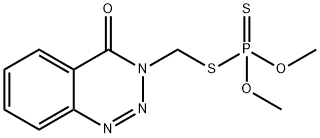



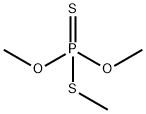
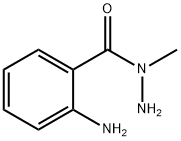
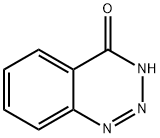

You may like
-
 2033-24-1 98%View Details
2033-24-1 98%View Details
2033-24-1 -
 42831-50-5 5-METHYLISOXAZOLE-4-CARBOXYLIC ACID 98%View Details
42831-50-5 5-METHYLISOXAZOLE-4-CARBOXYLIC ACID 98%View Details
42831-50-5 -
 1975-50-4 98%View Details
1975-50-4 98%View Details
1975-50-4 -
 2-HYDROXY BENZYL ALCOHOL 98%View Details
2-HYDROXY BENZYL ALCOHOL 98%View Details
90-01-7 -
 2-Chloro-1,3-Bis(Dimethylamino)Trimethinium Hexafluorophosphate 221615-75-4 98%View Details
2-Chloro-1,3-Bis(Dimethylamino)Trimethinium Hexafluorophosphate 221615-75-4 98%View Details
221615-75-4 -
 61397-56-6 CIS BROMO BENZOATE 98%View Details
61397-56-6 CIS BROMO BENZOATE 98%View Details
61397-56-6 -
 14714-50-2 (2-Hydroxyphenyl)acetonitrile 98+View Details
14714-50-2 (2-Hydroxyphenyl)acetonitrile 98+View Details
14714-50-2 -
 118753-70-1 98+View Details
118753-70-1 98+View Details
118753-70-1